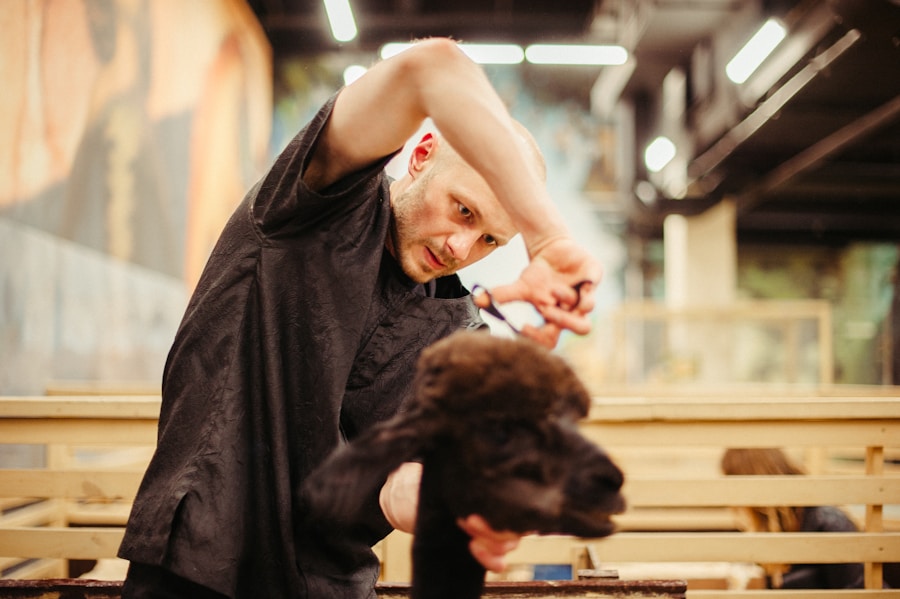Potty training is a significant milestone in a child’s development, and it can be both an exciting and challenging time for parents. Understanding the basics of potty training is essential for a successful transition from diapers to using the toilet. The first step in potty training is to determine if your child is ready. Signs of readiness include showing interest in the toilet, staying dry for longer periods, and being able to communicate their needs. It’s important to remember that every child is different, and there is no set age for potty training. Some children may be ready as early as 18 months, while others may not be ready until they are closer to three years old.
Once you have determined that your child is ready for potty training, it’s important to create a positive and supportive environment. This can be done by introducing your child to the concept of using the toilet and allowing them to become familiar with the process. It’s also important to be patient and understanding, as accidents are a normal part of the learning process. Additionally, it’s important to have the right tools for potty training, such as a child-sized potty or a toilet seat insert, as well as plenty of underwear and extra clothing for accidents. By understanding the basics of potty training and creating a supportive environment, you can set the stage for a successful transition from diapers to using the toilet.
Creating a Potty Training Schedule
Creating a potty training schedule is an essential part of the potty training process. A consistent schedule can help your child understand when it’s time to use the toilet and can also help prevent accidents. When creating a potty training schedule, it’s important to take into account your child’s natural bathroom habits. For example, many children have a bowel movement shortly after eating, so it may be helpful to have them sit on the potty after meals. Additionally, it’s important to have your child sit on the potty at regular intervals throughout the day, such as first thing in the morning, before and after naps, and before bedtime.
It’s also important to be patient and understanding when creating a potty training schedule. It may take some time for your child to get used to the schedule and understand when it’s time to use the toilet. It’s also important to be flexible and willing to adjust the schedule as needed. Additionally, it’s important to provide positive reinforcement when your child successfully uses the toilet according to the schedule. This can be done through praise, stickers, or small rewards. By creating a potty training schedule that takes into account your child’s natural bathroom habits and being patient and understanding, you can help set the stage for a successful transition from diapers to using the toilet.
Positive Reinforcement Techniques
Positive reinforcement techniques are an essential part of potty training and can help motivate your child to use the toilet. Positive reinforcement involves providing praise or rewards when your child successfully uses the toilet. This can help reinforce the behavior and encourage your child to continue using the toilet. One effective positive reinforcement technique is to provide verbal praise when your child successfully uses the toilet. This can be as simple as saying “good job” or “I’m so proud of you.” Verbal praise can help boost your child’s confidence and make them feel proud of their accomplishments.
In addition to verbal praise, it can also be helpful to provide tangible rewards for successful toilet use. This can include stickers, small toys, or treats. It’s important to choose rewards that are meaningful to your child and that will motivate them to continue using the toilet. It’s also important to be consistent with positive reinforcement and provide praise or rewards every time your child successfully uses the toilet. By using positive reinforcement techniques, you can help motivate your child to use the toilet and make the potty training process a positive and rewarding experience.
Dealing with Accidents
Dealing with accidents is an inevitable part of the potty training process, and it’s important to handle them with patience and understanding. Accidents are a normal part of learning to use the toilet, and it’s important not to scold or shame your child when they occur. Instead, it’s important to remain calm and reassure your child that accidents happen and that it’s okay. It’s also important to involve your child in the clean-up process, as this can help them take responsibility for their actions.
It’s also important to identify any patterns or triggers that may lead to accidents and make adjustments as needed. For example, if your child tends to have accidents when they are engrossed in play, it may be helpful to remind them to use the toilet at regular intervals. Additionally, it’s important to provide positive reinforcement when accidents are minimized or when your child successfully uses the toilet after an accident. By handling accidents with patience and understanding and making adjustments as needed, you can help your child navigate this challenging aspect of potty training.
Transitioning to Outdoor Potty Training
Transitioning to outdoor potty training is an important step in the potty training process, especially for children who will be attending preschool or daycare. Outdoor potty training involves teaching your child how to use public restrooms and how to manage using the toilet outside of their home environment. One effective way to transition to outdoor potty training is to practice using public restrooms with your child before they start preschool or daycare. This can help familiarize them with using different toilets and can help reduce anxiety about using unfamiliar facilities.
It’s also important to provide positive reinforcement when your child successfully uses public restrooms. This can help boost their confidence and make them feel more comfortable using public facilities. Additionally, it’s important to be patient and understanding during this transition period, as it may take some time for your child to adjust to using public restrooms. By gradually introducing your child to outdoor potty training and providing positive reinforcement, you can help make this transition a smooth and successful one.
Consistency is Key
Consistency is key when it comes to potty training, and it’s important to maintain a consistent approach throughout the process. This includes being consistent with your potty training schedule, providing consistent positive reinforcement, and handling accidents in a consistent manner. Consistency can help your child understand what is expected of them and can help reinforce their learning.
It’s also important for all caregivers involved in the potty training process to be consistent with their approach. This includes parents, grandparents, babysitters, and teachers. It’s important for everyone involved in your child’s care to be on the same page when it comes to potty training in order to provide a consistent experience for your child.
Celebrating Successes
Celebrating successes is an important part of the potty training process and can help motivate your child to continue using the toilet. It’s important to celebrate both small and large successes, such as using the toilet independently for the first time or going an entire day without any accidents. This can be done through verbal praise, high-fives, stickers, or small rewards.
It’s also important to involve your child in celebrating their successes by allowing them to choose their own rewards or by letting them share their accomplishments with others. By celebrating successes, you can help boost your child’s confidence and make the potty training process a positive and rewarding experience for them.
In conclusion, potty training is a significant milestone in a child’s development, and it’s important for parents to understand the basics of potty training in order to support their child through this process. Creating a potty training schedule, using positive reinforcement techniques, handling accidents with patience and understanding, transitioning to outdoor potty training, maintaining consistency, and celebrating successes are all essential components of successful potty training. By taking a supportive and positive approach, parents can help their children navigate this challenging but rewarding aspect of growing up.






музыка mailsco представляет собой ключевой составляющей нашей культуры.